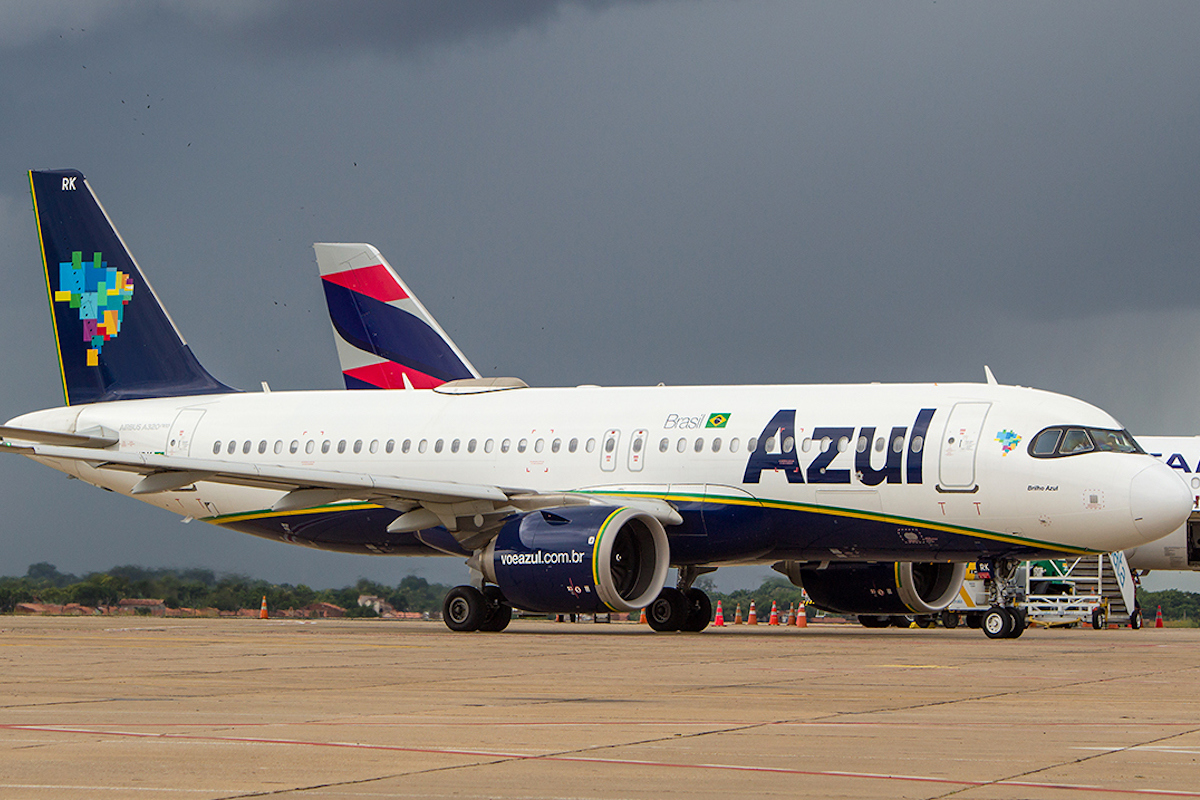Azul Escapes Potential Bankruptcy With Aircraft Lessor Agreements

Photo Credit: Flickr / Alexandro Dias
Brazilian airline Azul has avoided the fate that befell many of its largest competitors, inking deals with many of its aircraft lessors that should allow it to avoid a potential bankruptcy filing.
The agreements, which cover 90 percent of the Brazilian carrier's lease obligations, include an adjustment in lease rates to current market rates, eliminating Covid-related payment deferrals, and the conversion of the difference in value to lessors to a mix of long-term debt and equity, Azul said late Sunday. The deal eliminates an estimated 3 billion Brazilian reais ($578 million) in negative cashflow this year with breakeven now forecast, and positive cashflow forecast annually from 2024.
"Reaching these agreements demonstrates tremendous success in our approach. The leasing community has recognized that supporting Azul is an intelligent, revenue-maximizing business decision," Azul Chief Financial Officer Alex Malfitani said Monday. Lessors have pulled no aircraft from the carrier's fleet, he added.
It cannot be overstated how big of a deal the agreements are. At the end of the year, Azul leased 87 percent of its 194-aircraft strong fleet, or 168 planes. Payment obligations for those aircraft, which must be made in U.S. dollars — more on that later — amounted to more than 4 billion Brazilian reais in 2023 and 2024 alone; and total minimum lease payments totaled 26.8 billion Brazilian reais. Those lease obligations represented roughly 80 percent of gross debt. Compounding it all was the weak Brazilian real, which tumbled roughly 30 percent against the U.S. dollar last year. That significantly increased the cost of everything from fuel to aircraft lease payments for Azul.
The situation got so bleak that in January, reports indicated that Azul had engaged restructuring advisors. A U.S. Chapter 11 bankruptcy, which Latin American giants Aeromexico, Avianca, and Latam Airlines all went through during the pandemic, was not off the table.
But Azul is not finished restructuring its debt. Executives on the airline's fourth-quarter earnings call Monday declined to put exact numbers to the savings achieved until agreements are reached with all of its creditors. This includes the lessors holding the last 10 percent of its aircraft lease obligations, and with airframers Airbus and Embraer.
"We’re gonna get there, and we’re probably gonna get there in the next couple of weeks," CEO John Rodgerson.
If it weren't for Azul's debt restructuring, the airline would have had a very different earnings call. Yields were up by nearly half, and revenues by 40 percent in the fourth quarter compared to 2019. The carrier reported a respectable 11.8 percent operating margin on a 525 million Brazilian reais operating profit; Azul posted an adjusted 611 million Brazilian reais net loss after interest and taxes.
“2022 was a record for Azul," founder David Neeleman said Monday. The airline posted a 1.1 billion Brazilian reais operating profit and a 7.1 percent margin for the full year. And below the headline numbers, its business segments continued to pay off, including a 153 percent year-over-three-year jump in revenues at its logistics business, Azul Cargo; nearly doubling "billings" at its loyalty program, TudoAzul; and a 90 percent increase in revenues at its tour business, Azul Viagens.
Azul is Brazil's third largest domestic airline by passenger traffic. Last year, the carrier had just over a 29 percent share of the market, according to data from Brazilian civil aviation regulator ANAC. Latam was the largest with a nearly 37 percent share, and Gol second with a 34 percent share. However, Azul has the broadest network owing to its fleet of ATR turboprops and Embraer E-Jets that can serve smaller cities across Brazil more economically than Gol or Latam's respective fleets of Boeing 737 and Airbus A320 family planes.
This year, Azul plans to grow system capacity by roughly 15 percent year-over-year. The airline was 10 percent larger last year than it was in 2019. Much of the growth will come from new international routes, including new six-times weekly service to Paris Orly from Azul's São Paulo Viracopos hub on an Airbus A350-900 from April 26. Its domestic Brazil capacity is forecast to increase roughly 6 percent year-over-year. An expanded schedule at São Paulo's close-in Congonhas airport, which is popular with lucrative business travelers, begins later in March.
Corporate travel volumes remain down roughly 15 percent from 2019, Azul Chief Revenue Officer Abhi Shah said. However, with yields up so much compared to four years ago, corporate travel revenues exceed pre-pandemic levels.
"There is still some significant upside recovery to come," Shah said.
Azul forecasts an earnings before interest, taxes, depreciation, and amortization profit greater than 5 billion Brazilian reais this year.
